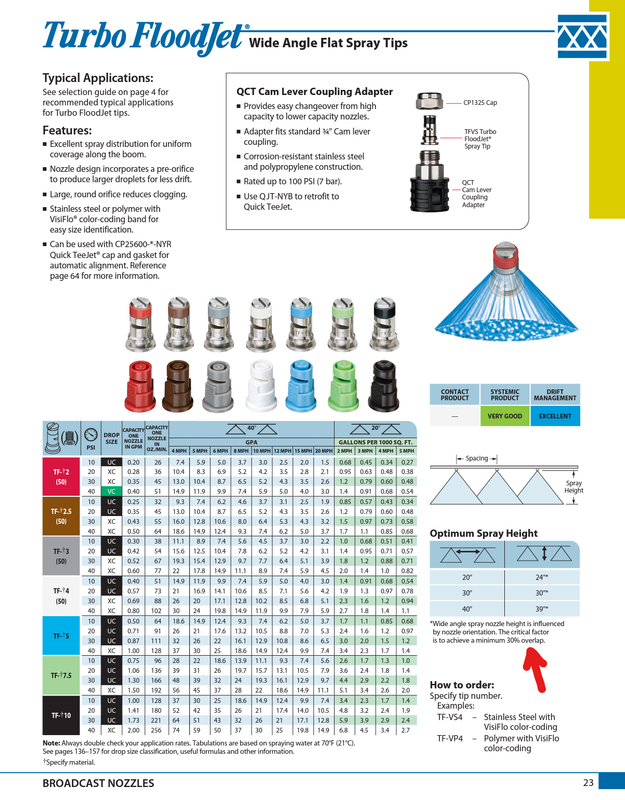Application Guide:
This handy application chart rates TeeJet nozzles for different application types. You can click on each nozzle in the left column and it will navigate you to the appropriate TeeJet catalog page.
This handy application chart rates TeeJet nozzles for different application types. You can click on each nozzle in the left column and it will navigate you to the appropriate TeeJet catalog page.







